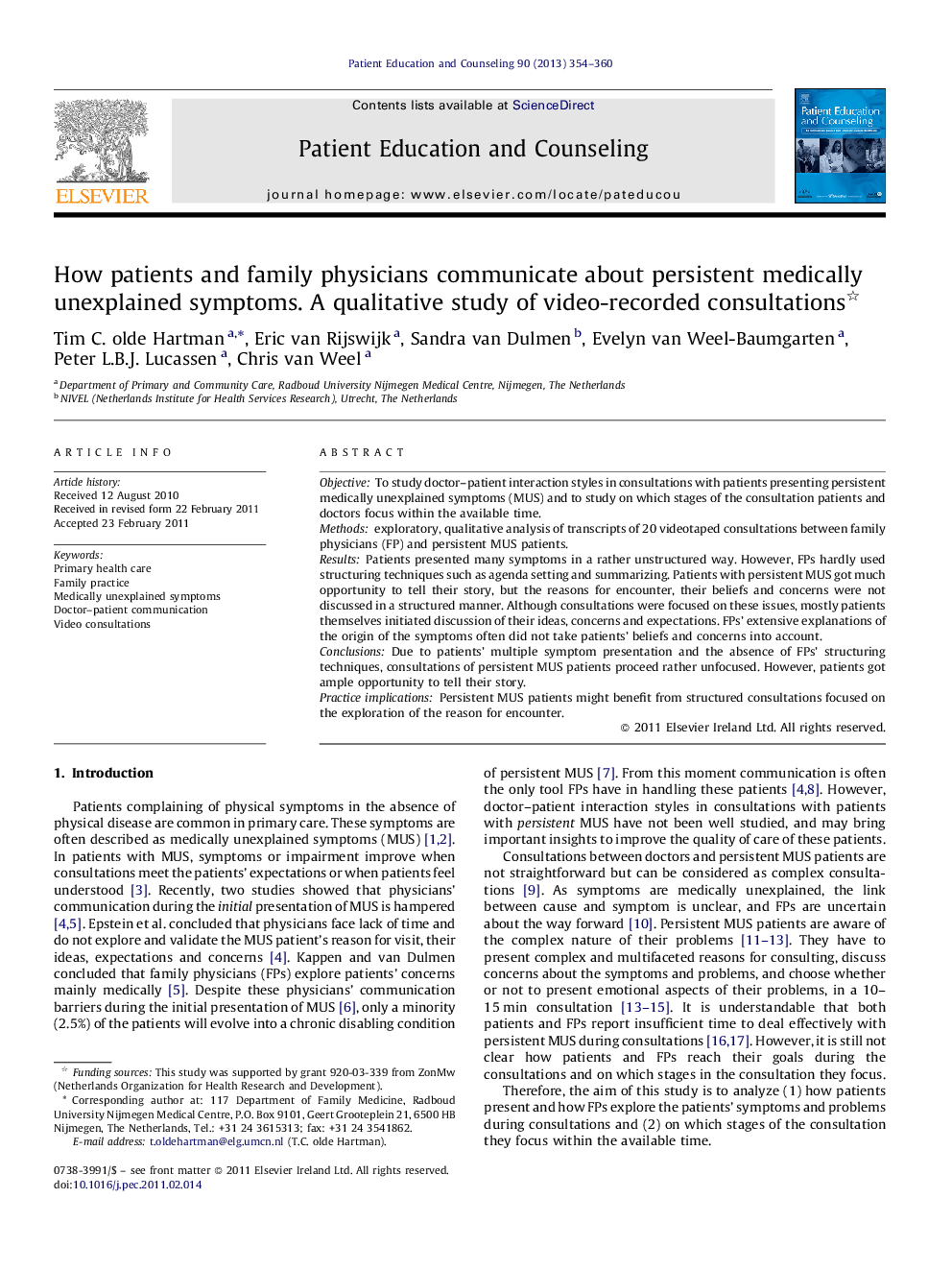| Article ID | Journal | Published Year | Pages | File Type |
|---|---|---|---|---|
| 3813506 | Patient Education and Counseling | 2013 | 7 Pages |
ObjectiveTo study doctor–patient interaction styles in consultations with patients presenting persistent medically unexplained symptoms (MUS) and to study on which stages of the consultation patients and doctors focus within the available time.Methodsexploratory, qualitative analysis of transcripts of 20 videotaped consultations between family physicians (FP) and persistent MUS patients.ResultsPatients presented many symptoms in a rather unstructured way. However, FPs hardly used structuring techniques such as agenda setting and summarizing. Patients with persistent MUS got much opportunity to tell their story, but the reasons for encounter, their beliefs and concerns were not discussed in a structured manner. Although consultations were focused on these issues, mostly patients themselves initiated discussion of their ideas, concerns and expectations. FPs’ extensive explanations of the origin of the symptoms often did not take patients’ beliefs and concerns into account.ConclusionsDue to patients’ multiple symptom presentation and the absence of FPs’ structuring techniques, consultations of persistent MUS patients proceed rather unfocused. However, patients got ample opportunity to tell their story.Practice implicationsPersistent MUS patients might benefit from structured consultations focused on the exploration of the reason for encounter.
